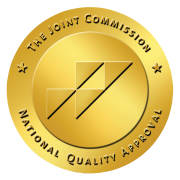Understanding Bipolar II Disorder
In a world overflowing with life and variety of experience, many walk a tightrope between two opposite feelings. It’s reminds us of the full spectrum of human experience—from the profound depths of despair to the exuberant peaks of elation. However, for some, this swing of emotions isn’t just a mundane part of life but a relentless reality. The name for this condition is “Bipolar II Disorder.”
The Nature of Bipolar II
Bipolar II, a subset of bipolar disorder, is often misunderstood. It’s not merely the occasional shift between happiness and sadness that everyone experiences; it’s a serious mental health condition displaying episodes of depression and hypomania (a milder form of mania). These aren’t fleeting moments—they are intense, persistent, and capable of affecting everything from brushing your teeth to the way you interact with your closest loved ones.
According to the National Institute of Mental Health, nearly 2.8% of U.S. adults had bipolar disorder in the past year. Of this percentage, a significant number were diagnosed with Bipolar II. It’s not a rare butterfly fluttering in isolation but one that’s been seen by many, felt by a considerable number, and understood by just a few.
Types of Bipolar
Bipolar disorder emerges as a significant, multifaceted phenomenon. Delving into its depths, we discover that bipolar disorder is less like a single mental illness and more like a constellation of related conditions.
Bipolar I Disorder
Individuals diagnosed with Bipolar I experience full-blown manic episodes, which can include irritable moods, grandiosity, decreased need for sleep, and often impulsive behaviors. These manic episodes can last for a week or longer. With this diagnosis depression is also common, which mirrors the melancholic depths of the valley, where feelings of sadness, hopelessness, and a loss of interest or pleasure in most activities reign.
Bipolar II Disorder
If Bipolar I is the vast mountain range with its towering peaks and deep valleys, Bipolar II is its slightly gentler cousin, though no less complex. Here, the mania’s intensity is dialed down to what’s termed as hypomania. Hypomanic episodes share many symptoms with mania but are shorter in duration and less intense. They don’t typically require hospitalization and might even go unnoticed. But the valleys of depression in Bipolar II can be as profound and debilitating as those in Bipolar I.
Cyclothymic Disorder
Cyclothymia paints a picture reminiscent of the gentle undulations of rolling meadows rather than the stark contrasts of mountains and valleys. Those with this condition experience milder mood fluctuations, with hypomanic symptoms and periods of depressive symptoms lasting for at least two years. These mood swings, though milder than those of Bipolar I and II, are persistent and can affect one’s daily life, much like how a brook consistently winds its way through a meadow.
Rapid Cycling
Within this landscape we may find the phenomenon of rapid cycling. In this, people experience four or more episodes of mania, hypomania, or depression within a year. It’s as though the seasons change unpredictably, without notice, each one coming with its temperament and challenges.
Mental Health IOP for Bipolar
Treatment for Bipolar II isn’t a straight path. However, in recent years, there has been a surge in successful treatments, one of which is the mental health IOP (Intensive Outpatient Program) for bipolar.
The mental health IOP for bipolar offers structured therapy without the need for hospitalization. This means patients can remain in their homes, surrounded by familiarity and comfort, and yet receive rigorous therapeutic support. It’s similar to learning how to navigate a river with a seasoned guide, ensuring safety while also embracing the unpredictability of the journey.
Such programs typically involve group therapies, individual counseling, and education about the disorder. The beauty of the mental health IOP for bipolar is its blend of structure and flexibility, allowing patients to integrate treatment into their daily lives.
The Road Ahead
Understanding conditions like Bipolar II is a significant step forward in mental health. For those diagnosed, the statistics may seem daunting. However, the increase in specialized treatments such as the mental health IOP for bipolar is encouraging.
In one’s journey with Bipolar II, it’s essential to remember that, just like the seasons that shift from winter to spring, from fall to summer, the seasons of the mind too can change. With understanding, treatment, and support, individuals with Bipolar II can lead fulfilling lives, ones where they navigate their emotions and not the other way around.
What Now?
The journey towards balance, understanding, and wellness is within your grasp. Embrace the opportunity to navigate the intricate terrains of your mind with skilled guides beside you.
Call Lido Wellness Center, your mental health IOP, at 949-541-8466. Let today be the day you choose to begin the path towards serenity and understanding. Remember, in the vast tapestry of human emotions, there’s a thread of hope, strength, and healing waiting for you.




